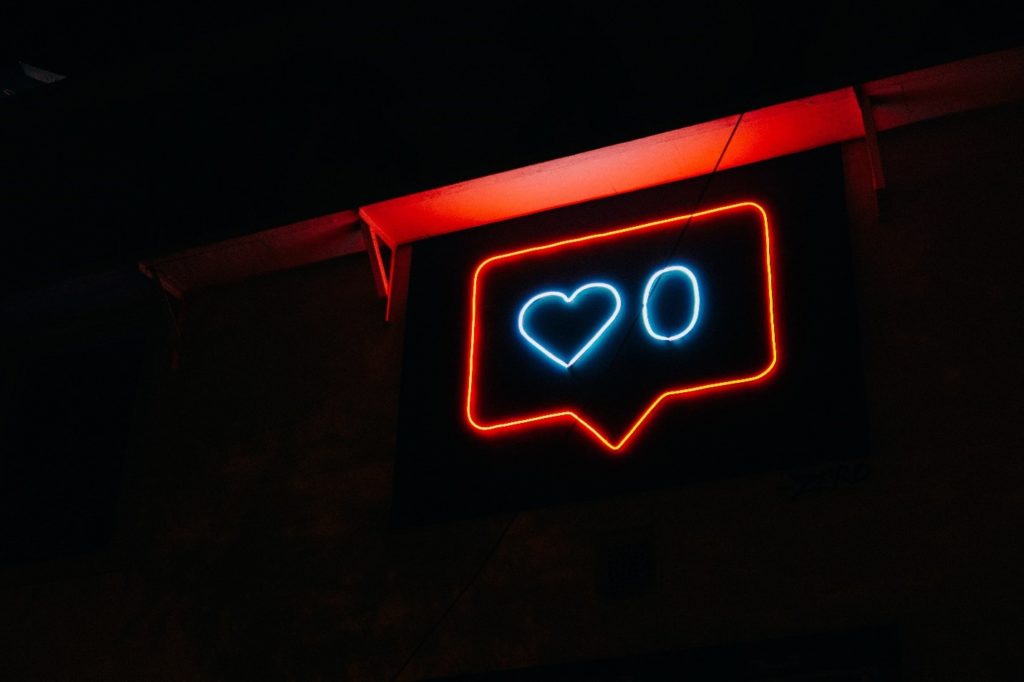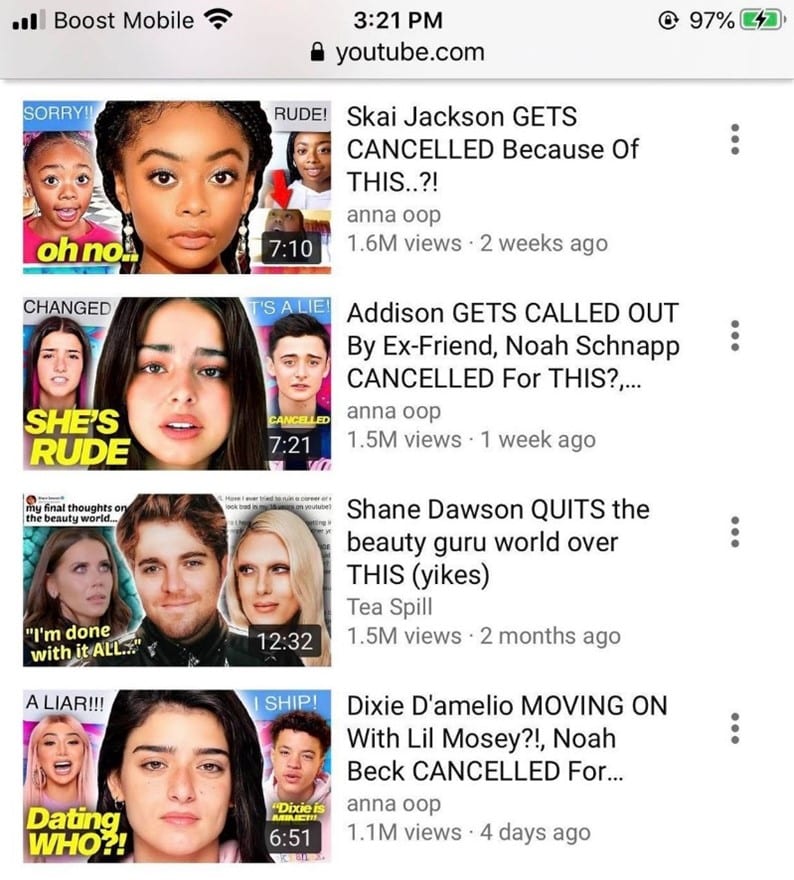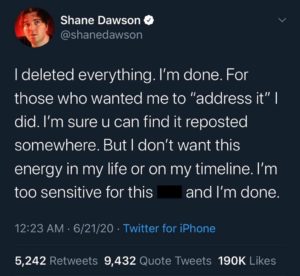Smartphones can be a gateway to public humiliation for kids and teens. Not only do they feel constantly scrutinized, but it’s difficult to predict your audience. One slip, and you can become the victim of cancel culture. Today’s article covers what cancel culture is, how influencers have been impacted, and how kids can fall victim to it. Find out how your family can avoid this digital nightmare with our sensible GKIS tips.
What is “Cancel Culture?”
According to Psychology Today, cancel culture is described as “the ending of (or attempt at ending) someone’s career or prominence to hold them accountable for immoral behavior.”[1] This notion of exclusion is masqueraded as a trendy new term yet is synonymous with what we already know as cyberbullying. So, what does it mean to be cancelled? When someone is cancelled, it means that their reputation has taken a severe hit from a mistake that is nearly impossible to come back from, justify, or apologize over.
Found predominantly among social media platforms, cancel culture involves relentless comments, posts, and sharing of the alleged immoral behavior. Intending to remove someone from a place of authority or popularity, these efforts go on indefinitely. Depending on the targeted person, people can be cancelled once, twice, or even more.
The complexity of cancel culture typically lies within the severity of the situation; however, the trend as a whole remains unmatched in the realm of cyberbullying— sometimes going as far as doxing or swatting. Doxing means publicly outing the victim’s private information with malicious intent. By making personal information public, other bad actors online can further stalk and harass the victim. Swatting occurs when a prank call dispatches armed law enforcement to the victim’s location under false pretenses, like saying the victim is holding a hostage and is armed. To learn about other need-to-know cyberbullying techniques, check out Dr. Bennett’s book, Screen Time in the Mean Time: A Parenting Guide to Get Kids and Teens Internet Safe. It’s available in paperback and audible on Amazon.
Cancel Culture is Trending
Anybody can say anything behind a screen. You can create a fake username and present a profile for any virtual self. Without a trace, people will be unable to decipher your true self from your virtual self, rendering you the power to say anything you want to say without real-life consequences. Thousands of fanbases (also known as “stans” or “armies”) have their phones readily available for battle with their eyes on the screen and the intent to voice their opinion with even the slightest invitation from their idols.
A classic example of cancel culture has been the fall of Shane Dawson in mid-2020, a YouTuber who was once famous for conspiracy theories, docu-series of other YouTubers, and other day-to-day vlogs. At his peak he had a total of 23.3 million subscribers but has since abandoned his channel, leaving video views and subscriber counts to plummet.[2]
Why was Shane Dawson cancelled? Following the 2020 rise of the Black Lives Matter movement, old videos (~10-year-old videos) from Shane Dawson’s channel resurfaced. Such content included racial slurs, inappropriate acts towards children, and even skits involving blackface. These videos spiraled throughout social media, leaving Shane Dawson to become #1 in trending for infamous reasons.
Gossip YouTubers took to these tweets, threads, and videos compiling incriminating evidence against Shane Dawson. Users across all social media platforms chastised him, using words like “pedophile,” “predator,” and “racist.” In a matter of three months, Shane Dawson lost over two million subscribers, was dropped as a brand ambassador of the makeup line Morphe, had all of his videos demonetized (he is no longer able to make any money off of views), and has since been silent since the end of June.
The Psychology Behind Cancel Culture
Research demonstrates that people invest in cancel culture because it offers them:
- increased social status (one’s popularity in an online community),
- an opportunity to show their commitment to their virtual community, and
- instant gratification (enjoying the battle and voicing your opinion in real-time).[3]
This is detrimental on both ends of cancel culture, with one person becoming a victim of cyberbullying and the other succumbing to narcissistic tendencies. Narcissism in today’s online community involves becoming preoccupied with one’s self-image and projecting your flaws or mistakes onto other people to avoid becoming the outcast.[4] Likes, comments, and shares have become the token economy of the internet, driving people to continue their behaviors no matter how toxic they may be.
We are living in a time where saying nothing can be just as incriminating as saying something. Silence online insinuates compliance, leaving kids and teens vulnerable to cyberbullying even if they opt to stay out of it. Cancel culture flourishes at the expense of human error, with online communities waiting for the next person to slip up. Even though it is important for people to be held accountable for their actions, our children must understand that cancel culture is not the solution.
Cyberbullying Exposure and Prevention
Not only influencers fall victim to cyberbullying. Whether your child has succumbed to the giving or receiving end of cyberbullying, it’s never too late to have a conversation about the many issues involving our virtual selves. Social dynamics look different online compared to face-to-face interaction; however, a sense of humanity should not be among those differences.
Social media posts never completely vanish, as someone could easily take a screenshot of your mistake and share it among thousands of eager viewers to be released over and over. It is crucial that children, tweens, and teens understand the challenges of virtual vulnerability and accountability.
Here are our GKIS tools to avoid digital injury:
- Start informing your kids about online risks by adopting our free Connected Family Agreement. Our agreement not only helps your family negotiate sensible rules, but it also covers online etiquette, empathy, and family values.
- Follow our GKIS blog for hot topics to stay in-the-know for family discussion around a screen-free dinner table. You’ll receive an article a week in your email if you sign up for your free Connected Family Agreement. If it’s not for you, you can unsubscribe at any time.
- Let us do the research for you with our Screen Safety Toolkit. Our toolkit is a family-tested, outcome-based resource guide with our best recommendations, how-to information, and links to our favorite easy-to-onboard parental control systems. You’ll be set to create the custom screen safety toolkit for your unique child. Help your kids stay accountable with the rules and regs included in our Connected Family Course. This course not only gives you what you need for safety, but it also offers fun home setup ideas to enrich online activities with offline play.
- For kids only, our Social Media Readiness Course is particularly powerful in helping tweens & teens get educated about the risks of digital injury and offer Dr. B’s tested psychological wellness techniques. Using modules and mastery quizzes, this online course offers expertise to parents and kids, so they can form a warm and supportive alliance with kids who are vulnerable and relatively inexperienced.
 Thanks to CSUCI intern Kaylen Sanchez for contributing to this GKIS article.
Thanks to CSUCI intern Kaylen Sanchez for contributing to this GKIS article.
I’m the mom psychologist who will help you GetKidsInternetSafe.
Onward to More Awesome Parenting,
Tracy S. Bennett, Ph.D.
Mom, Clinical Psychologist, CSUCI Adjunct Faculty
GetKidsInternetSafe.com
Photo Credits
Photo by Prateek Katyal from Pexels
Photo by Kaylen Sanchez
Photo by Kaylen Sanchez
Photo by cottonbro from Pexels
Works Cited
[1] Henderson, R. (2020, March/April) What Propels Cancel Culture? Psychology Today, 53(2) 36-38.
[2] Urgo, J. (n.d.). Shane’s YouTube Stats (Summary Profile) – Social Blade Stats. Retrieved from https://socialblade.com/youtube/user/shane/monthly
[3] Henderson, R. (2019, December 01). 5 Reasons Why People Love Cancel Culture. Retrieved from https://www.psychologytoday.com/us/blog/after-service/201912/5-reasons-why-people-love-cancel-culture
[4] MacDonald, P. (2014). Narcissism in the modern world. Psychodynamic Practice: Individuals, Groups and Organisations, 20(2), 144–153. https://doi-org.summit.csuci.edu/10.1080/14753634.2014.894225












